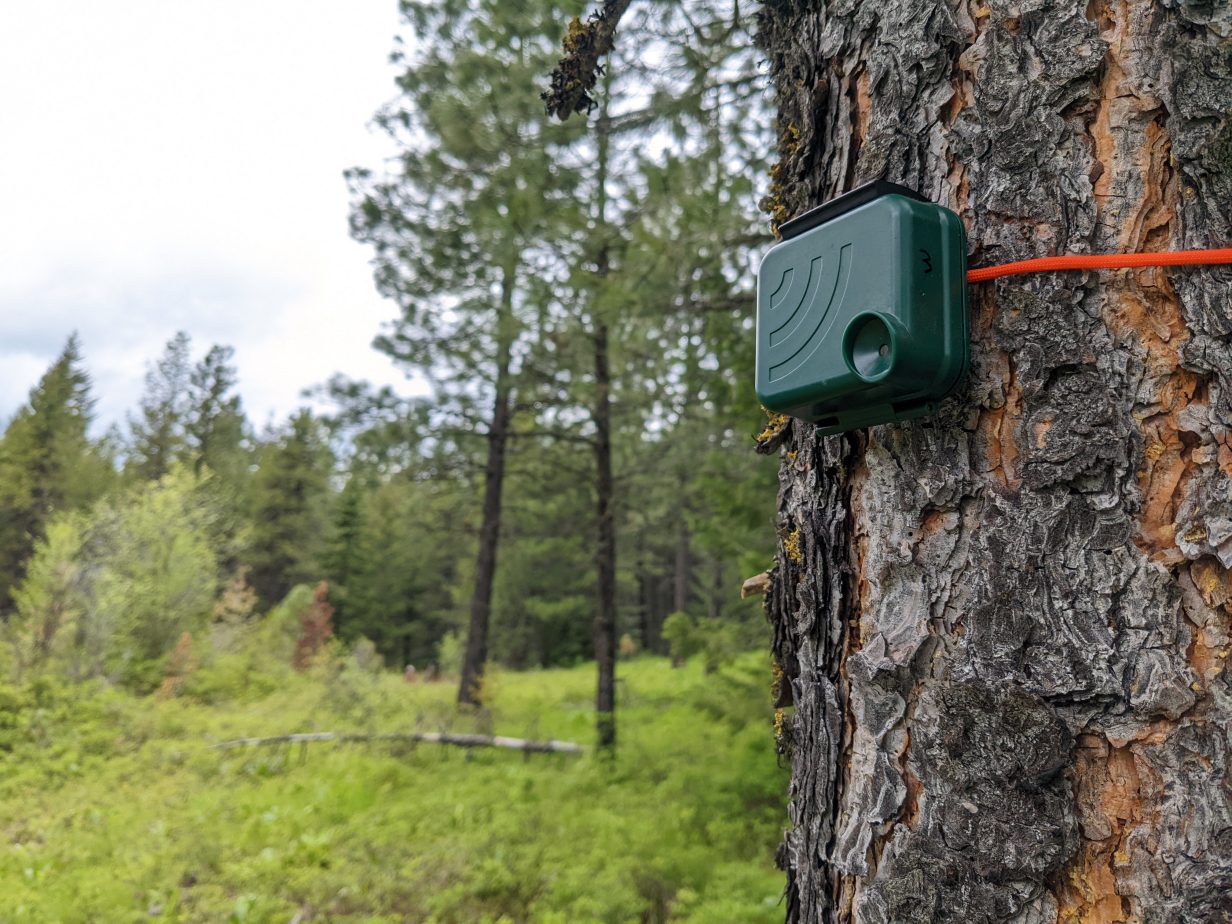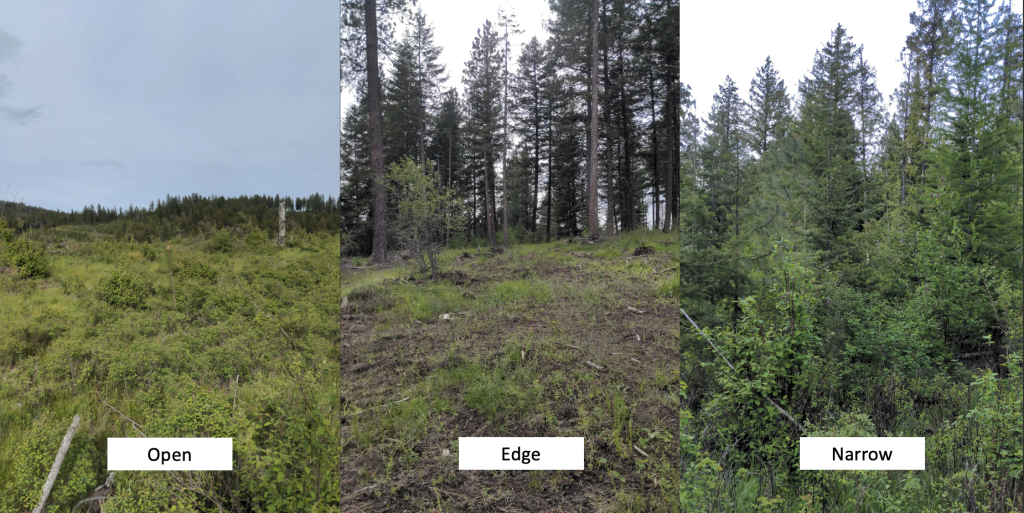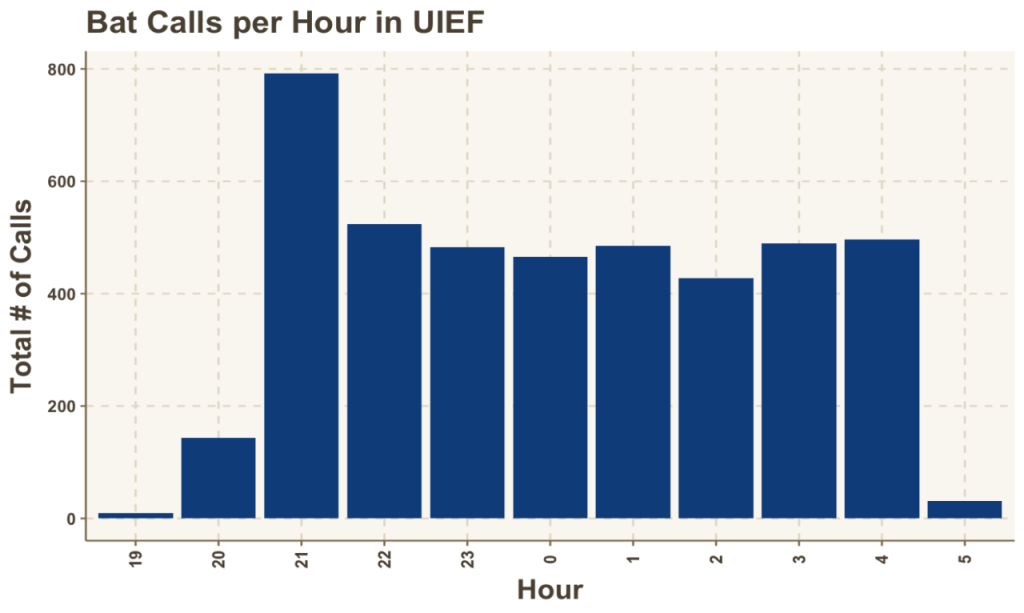
Studying Bats in the UI Experimental Forest Using Acoustic Monitoring
By: Klara McKay Email: isbe8739@vandals.uidaho.edu
Home Town: Missoula, MT High School: Valley Christian School
Major: Wildlife Resources, Ecol & Cons Biol-Cons Biol Opt
Department: Fish & Wildlife Sciences
College: College of Natural Resources
Creepy, dirty, disease-ridden, blood-sucking pests. This is the description that come to mind for most people when they think about bats. So, why would anyone want to study bats? The truth is that bats are incredibly important to many ecosystems world-wide. Bats eat insects that carry diseases which means they serve as a natural insect population control and do more to prevent disease than to spread it. They also save the United States agricultural industry over 2 billion dollars a year by feeding on insect pests. In Idaho alone, bats are worth 300 million dollars a year for preventing crop damage. Other species of bats around the world pollinate plants when they feed on fruit and nectar. Overall, bats perform a multitude of irreplaceable ecosystem services which are important to human health and economics.
Unfortunately, there are several threats working against bats right now. Even though there are over 1400 species of bats which makes up 20% of all mammalian species, approximately 80% of bat species are of unknown conservation status, threatened, or endangered. There are a lot of data gaps in our understanding of bats, which make it difficult for wildlife managers to know how to make decisions that would benefit bats in response to climate change, habitat degradation, and the spread of white nose syndrome. White nose syndrome (WNS) is a fungal disease that has wiped out millions of bats as it has swept across the United States from east to west since 2006. In October of 2021, the fungus that causes WNS was detected for the first time in a cave in southeastern Idaho. This means that in the next few years it is likely a population of Idaho bats will contract the disease and it will begin spreading across the state. It is more important now than ever that wildlife researchers gather preliminary data on the 14 species of Idaho bats before WNS and climate change begin to take a toll on populations.
One of the characteristics that make bats unique besides being the only flying mammal, is their ability to echolocate for navigation and foraging. This gives researchers an opportunity to non-invasively study bats by recording their echolocation calls and examining them for activity patterns and species identification. The objectives of this project is to create a species inventory of bats detected in the UI Experimental Forest (UIEF) and to characterize their activity based on foraging calls recorded over the summer of 2022.
From late May to early August, fourteen Audiomoth monitors were stationed throughout the UIEF, strategically placed to maximize bat detections and minimize excess noise. The monitors were also dispersed representatively among the three main bat habitat types: open, edge, and narrow. Open habitats are pastures, meadows, and open spaces. Narrow habitats are forested, cluttered areas with dense vegetation or other objects that would interrupt the soundscape. Edge habitats are where open and narrow habitats meet. Monitors were programmed to record audio for one minute in every ten minute interval between dusk and dawn.

At the end of the data collection season, all recordings were compiled and processed through a program called Kaleidoscope Pro which separated files where bat calls were detected and files that did not have any bat calls (“noise” files). Kaleidoscope then performed an automatic species identification on all the detected bat calls. These were not fully accurate however, which is common with this type of AI software, and all 4500 calls needed to be manually vetted. At this time they have been vetted by Klara McKay, but they will also be checked by a professional in this field. When this is complete, Klara will be able to create a final species inventory of the different species detected in the UIEF. The next step for this project is to begin data analysis, which will consist of an ANOVA test to see why there is an observed overall increase in bat foraging activity over the study period. This could be influenced by temperature, precipitation, habitat type, reproductive seasons, migration of different species, among others. At this time there are no final results available for this project, but some initial findings are shown below.


Last updated: 02/21/23
Products Produced:
| Type: | Title: | Date Published/Presented: | DOI: |
|---|---|---|---|
| Poster | Using Acoustic Monitoring to Detect Bat Species in the University of Idaho Experimental Forest | July 21, 2022 | |
| Poster | Building a Species Inventory and Characterizing the Foraging Behaviors of Bats in the University of Idaho Experimental Forest Using Acoustic Monitoring | November 9, 2022 | |
| Poster | Creating a Species Inventory and Characterizing Activity Patterns of Bats in the University of Idaho Experimental Forest Using Acoustic Monitoring | February 15, 2023 |
Additional Project Information:
Year in College Project Started: Senior
Faculty Advisor: Lisette Waits
Faculty Advisor Email: lwaits@uidaho.edu
Funding Source: OUR Summer Undergraduate Research Fellowship, Adele Berklund Research Scholar Award, Kenneth Hungerford Wildlife Scholarship and Research Award
External Link to Project Information: https://www.uidaho.edu/news/feature-stories/bat-girls
Project Location: University of Idaho Experimental Forest

